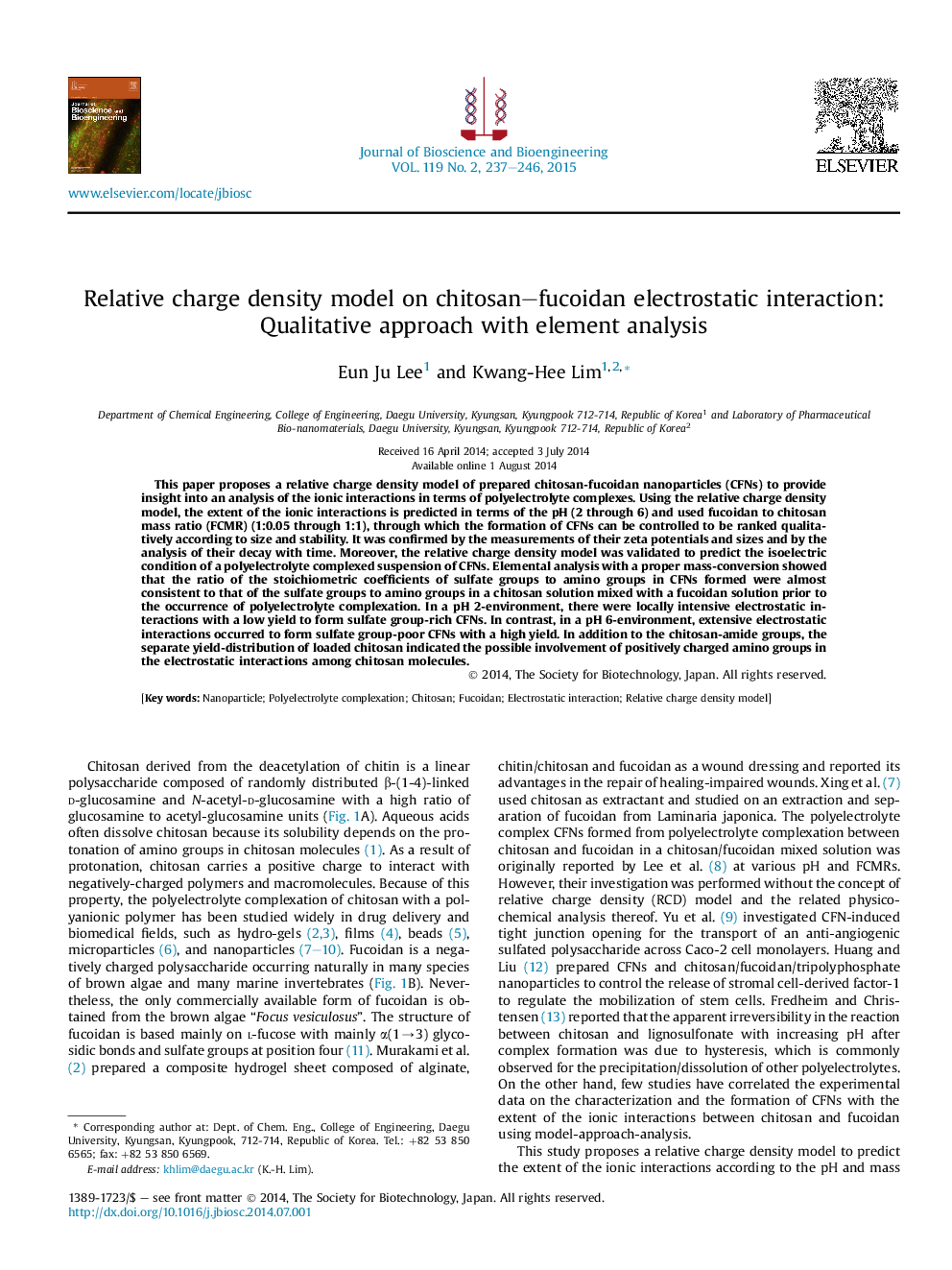| کد مقاله | کد نشریه | سال انتشار | مقاله انگلیسی | نسخه تمام متن |
|---|---|---|---|---|
| 20377 | 43171 | 2015 | 10 صفحه PDF | دانلود رایگان |
• We propose a relative charge density model of chitosan–fucoidan nanoparticles.
• The model can control the size of chitosan–fucoidan nanoparticles.
• At pH 2, sulfate group-rich nanoparticles are prepared with a low yield.
• At pH 6, sulfate group-poor nanoparticles are prepared with a high yield.
• We obtain separate yield-distributions of each loaded chitosan and fucoidan.
This paper proposes a relative charge density model of prepared chitosan-fucoidan nanoparticles (CFNs) to provide insight into an analysis of the ionic interactions in terms of polyelectrolyte complexes. Using the relative charge density model, the extent of the ionic interactions is predicted in terms of the pH (2 through 6) and used fucoidan to chitosan mass ratio (FCMR) (1:0.05 through 1:1), through which the formation of CFNs can be controlled to be ranked qualitatively according to size and stability. It was confirmed by the measurements of their zeta potentials and sizes and by the analysis of their decay with time. Moreover, the relative charge density model was validated to predict the isoelectric condition of a polyelectrolyte complexed suspension of CFNs. Elemental analysis with a proper mass-conversion showed that the ratio of the stoichiometric coefficients of sulfate groups to amino groups in CFNs formed were almost consistent to that of the sulfate groups to amino groups in a chitosan solution mixed with a fucoidan solution prior to the occurrence of polyelectrolyte complexation. In a pH 2-environment, there were locally intensive electrostatic interactions with a low yield to form sulfate group-rich CFNs. In contrast, in a pH 6-environment, extensive electrostatic interactions occurred to form sulfate group-poor CFNs with a high yield. In addition to the chitosan-amide groups, the separate yield-distribution of loaded chitosan indicated the possible involvement of positively charged amino groups in the electrostatic interactions among chitosan molecules.
Journal: Journal of Bioscience and Bioengineering - Volume 119, Issue 2, February 2015, Pages 237–246
